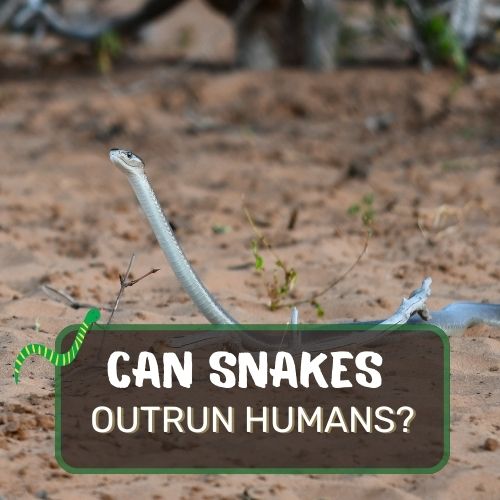
In the enthralling world of reptilian speed, the question “Can snakes outrun humans?” lingers like a captivating mystery.
This article delves into the intriguing comparison of snake and human speeds, examining the factors that determine who would prevail in a race.
From analyzing the serpentine locomotion of snakes to uncovering the species with the swiftest prowess, readers will gain insights into the dynamic interactions between snakes and humans.
Discover the impact of size, environment, and health on snake speeds, as well as safety tips and debunked myths surrounding snake behavior.
Join us on this thrilling journey to unravel the secrets of the racers from two vastly different worlds.
Table of Contents
- 1 Can snakes outrun humans? (Short Answer)
- 2 How fast can snakes run?
- 3 Factors affecting snake speeds
- 4 Examples of snake species and their speeds
- 5 Can humans outrun snakes?
- 6 Snake behavior towards humans
- 7 Safety tips when encountering snakes
- 8 Snake-human interactions in different environments
- 9 FAQ
- 10 Final thoughts on snakes outrunning humans
Can snakes outrun humans? (Short Answer)
Yes, snakes can outrun humans in short sprints. While the average speed of snakes ranges from 2 to 3 miles per hour, certain species like the Black Mamba can reach speeds of up to 12 miles per hour. In comparison, humans can run at speeds ranging from 6 to 10 miles per hour. Although snakes may be faster over short distances, humans have the advantage of endurance, enabling them to maintain a steady pace for longer periods. In summary, while snakes can be faster in short bursts, humans have the upper hand in endurance and can outrun snakes over longer distances.
How fast can snakes run?

Overview of snake locomotion
Snake locomotion is a fascinating aspect of their biology, allowing these limbless creatures to move efficiently across diverse terrains.
Here’s an expanded look at the primary modes of snake movement:
- Serpentine (Undulatory) Locomotion: This is the most common and recognizable form of snake movement. The snake pushes off objects in its environment, such as rocks, branches, or the rough ground, using a series of lateral (side-to-side) curves. This propels the snake forward.
- Concertina Locomotion: Used in tight spaces or when climbing. The snake anchors a part of its body while extending the rest forward, then pulls the rear part forward in an accordion-like motion.
- Sidewinding: This is a specialized form of movement primarily used by desert snakes to move on loose, sandy surfaces. The snake lifts a part of its body off the ground, moving it laterally, then placing it down while lifting another part, creating a series of diagonal loops. This minimizes contact with the hot sand and provides efficient movement.
- Rectilinear Locomotion: This method involves the snake using its wide belly scales, or scutes, to grip the ground. The muscles then move the scales in a coordinated manner, allowing the snake to crawl forward in a straight line. It’s a slow, creeping movement often seen in large pythons and boas.
Each mode of locomotion is adapted to specific environments or situations, showcasing the snake’s evolutionary versatility.
The unique muscular structure and flexibility of their spine enable these varied movements, allowing snakes to thrive in diverse habitats worldwide.
Explanation of snake speeds
The speed of snakes can vary greatly depending on the species and their size. While some snakes are slow movers, others can reach impressive speeds.
Generally, most snakes have an average speed of 2 to 3 miles per hour (3.2 to 4.8 kilometers per hour). However, certain species have been recorded to reach speeds of up to 8 miles per hour (12.9 kilometers per hour).
One of the fastest snakes is the Black Mamba, which can reach speeds of up to 12 miles per hour (19.3 kilometers per hour). If you’re trying to escape from a Black Mamba, you better hope you have a head start!
Comparison of snake speeds to human speeds
Now, let’s put things into perspective and see how snakes‘ speeds stack up against those of humans. On average, humans can run at speeds ranging from 6 to 10 miles per hour (9.7 to 16.1 kilometers per hour).
This means that most snakes can indeed outrun humans, at least in short bursts.
However, it’s important to note that humans have a significant advantage in endurance. While a snake may be faster over short distances, humans can maintain their pace for much longer.
So, in a marathon race, you’d likely be the winner, even against the fastest snake!
Factors affecting snake speeds

Size and species of the snake
Size matters!
The size and species of the snake play a crucial role in determining its speed. Larger snakes tend to move slower due to their heavier bodies, while smaller snakes can be more agile and quicker.
Additionally, certain species have evolved to be faster predators, while others have adapted to a more sedentary lifestyle, affecting their overall speed.
Environmental conditions
Just like any other creature, snakes’ speed can be influenced by the environment they find themselves in. For example, a snake may move faster on a smooth and open surface compared to rough terrain or dense vegetation.
Temperature and humidity also play a role; snakes are ectothermic, meaning their body temperature depends on the external environment. Warmer temperatures can increase their metabolism and, consequently, their speed.
Health and age of the snake
The health and age of a snake can impact its ability to move swiftly. Young snakes may be more agile and energetic, while older ones may have reduced mobility due to age-related factors.
Additionally, injuries or illnesses can hinder a snake’s speed, making it less capable of outrunning potential threats.
Examples of snake species and their speeds
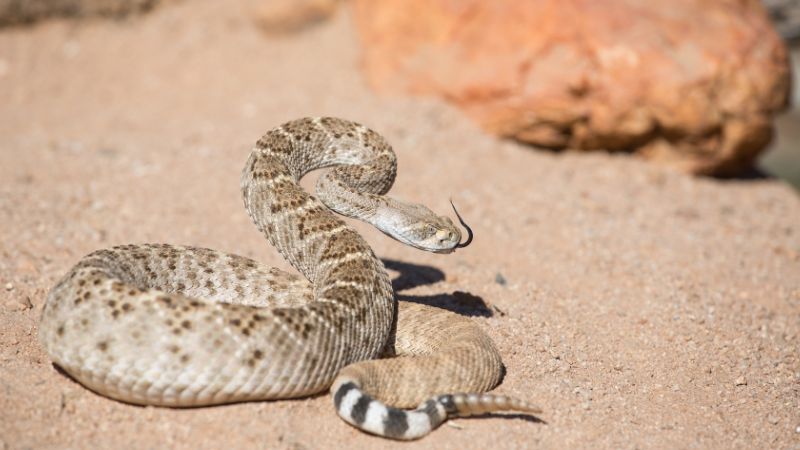
Black Mamba
The Black Mamba (Dendroaspis polylepis) is one of the fastest and deadliest snakes on the planet. Found in the savannas and rocky hills of Africa, this slender and highly venomous snake is renowned for its incredible speed.
With the ability to reach speeds of up to 12 miles per hour (19.3 kilometers per hour), the Black Mamba can easily outrun most humans in a short sprint.
If you ever encounter one of these formidable serpents in the wild, it’s best to keep a safe distance and avoid any confrontations.
Rattlesnakes
Rattlesnakes are a group of venomous snakes belonging to the genera Crotalus and Sistrurus. They are commonly found in North and South America, and some species have the distinctive rattle on their tails, serving as a warning to potential threats.
Rattlesnakes have varying speeds, depending on the species and individual characteristics. On average, they can move at speeds of around 2 to 3 miles per hour (3.2 to 4.8 kilometers per hour).
While they may not be as fast as the Black Mamba, their potent venom makes them equally dangerous.
Copperheads
Copperheads (Agkistrodon contortrix) are venomous pit vipers found in the eastern United States. They are known for their attractive copper-colored heads and bodies, which help them blend into their natural surroundings.
Copperheads are generally slower movers compared to some other snake species, with speeds ranging from 1 to 2 miles per hour (1.6 to 3.2 kilometers per hour).
However, their excellent camouflage and ambush hunting techniques make them formidable predators, especially in forested areas.
King Cobras
The King Cobra (Ophiophagus hannah) holds the title of being the longest venomous snake in the world. Found predominantly in Southeast Asia, the King Cobra is not known for its speed but rather its size and venomous bite.
It can reach lengths of up to 18 feet (5.5 meters) and possesses potent venom that can be deadly to both humans and other animals.
Despite not being as fast as some other snake species, encountering a King Cobra in the wild should be approached with extreme caution and respect.
Can humans outrun snakes?

Analysis of human running speeds
Humans are remarkably adaptable creatures, capable of running at different speeds depending on their fitness levels and the terrain they are on.
On average, a healthy adult human can run at speeds ranging from 6 to 10 miles per hour (9.7 to 16.1 kilometers per hour).
However, trained athletes can achieve even higher speeds, often exceeding 15 miles per hour (24.1 kilometers per hour) in short bursts.
Comparison to snake speeds
When comparing human running speeds to those of snakes, it becomes evident that snakes have the upper hand in short sprints.
The Black Mamba, for instance, can reach speeds of up to 12 miles per hour (19.3 kilometers per hour), outpacing even the swiftest humans.
In general, most snake species can outrun humans over short distances due to their serpentine locomotion, which provides efficient propulsion.
Instances where humans can outrun snakes
Despite snakes’ advantage in short sprints, humans can still prevail in certain situations. As mentioned earlier, humans excel in endurance running, meaning they can maintain a steady pace over longer distances.
While a snake might initially be faster in a short sprint, a human’s stamina allows them to keep going, eventually overtaking the snake in a prolonged chase.
Additionally, humans have the advantage of intelligence, which enables them to avoid confrontations with snakes whenever possible.
We can use our knowledge of snake habitats and behaviors to steer clear of potential encounters, reducing the likelihood of a race for survival.
Humans and snakes have evolved with their unique strengths, and while snakes might be faster over short distances, humans’ endurance and intellect give them the upper hand in the long run.
As fascinating as the question of whether snakes can outrun humans may be, it’s essential to remember that both creatures play critical roles in their respective ecosystems, and mutual respect is vital for coexistence.
Snake behavior towards humans
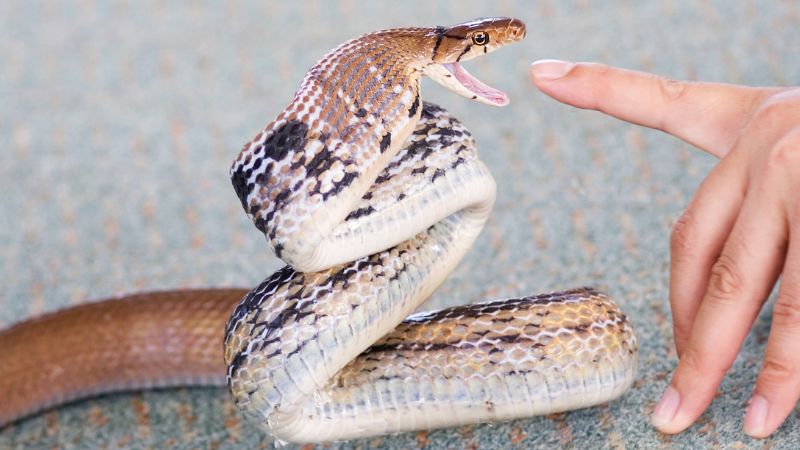
Reasons why snakes may approach humans
Contrary to popular belief, snakes usually do not approach humans with malicious intent. In most cases, they may approach humans out of curiosity, especially if they feel threatened or disturbed.
Snakes have a keen sense of smell and may be attracted to the scent of food or even the warmth of a human’s body.
Additionally, some snake species, like the corn snake, may approach humans due to their docile nature and tendency to explore their surroundings.
Reasons why snakes may flee from humans
More often than not, snakes prefer to avoid encounters with humans altogether. They are naturally shy and solitary creatures that seek safety and solitude.
When confronted with human presence, snakes are more likely to choose flight over fight. Their first instinct is to retreat and find a safe hiding spot where they can wait for the perceived threat to pass.
Precautions to take when encountering a snake
When you encounter a snake in the wild or even in your backyard, it’s essential to exercise caution. Give the snake plenty of space and avoid any sudden movements that might startle it.
Remember that snakes typically want to avoid you just as much as you want to avoid them.
By respecting their space and not attempting to handle or provoke them, you can prevent unnecessary conflicts and ensure both your safety and the snake’s.
Safety tips when encountering snakes
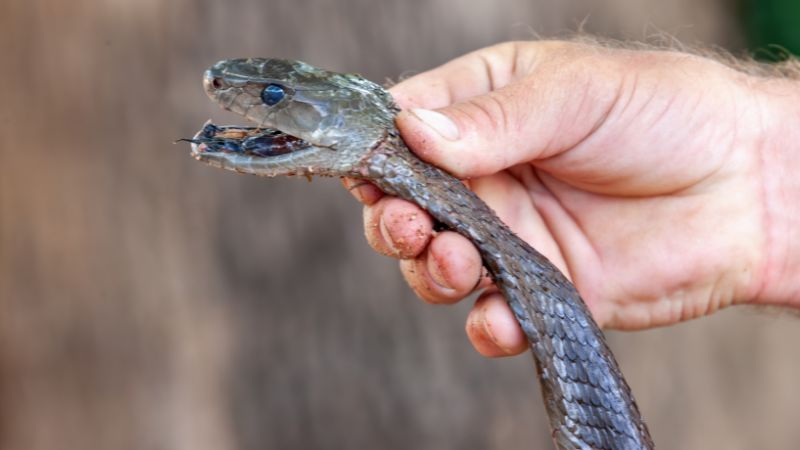
Do’s and don’ts when encountering a snake
- Do: Keep a safe distance and slowly back away from the snake to give it space.
- Do: Stay calm and avoid making sudden movements or loud noises that could startle the snake.
- Do: Wear appropriate footwear and clothing when hiking or exploring areas where snakes may be present.
- Don’t: Try to handle or pick up the snake, even if it appears non-venomous.
- Don’t: Attempt to provoke or agitate the snake in any way.
- Don’t: Approach or attempt to kill a snake out of fear; most snake bites occur when people attempt to handle or kill them.
How to handle a snake encounter
If you find a snake in your home or close to human activity areas, it’s essential to handle the situation carefully:
- Identify the species: If you can do so from a safe distance, try to identify the snake. This will help determine if it is venomous or non-venomous.
- Seek professional help: If you are unsure about the snake’s species or if it’s venomous, it’s best to call a local wildlife expert or animal control to safely remove the snake.
- Keep pets away: If you have pets, ensure they are kept at a safe distance from the snake until it’s removed.
Common myths about snake behavior debunked
- Myth: Snakes are aggressive and actively seek out humans to attack them.
- Fact: Snakes are generally shy and prefer to avoid human encounters. They will only bite if they feel threatened or cornered.
- Myth: All snakes are venomous and dangerous.
- Fact: The majority of snake species are non-venomous and harmless to humans. Even venomous snakes typically only bite as a last resort.
- Myth: Cutting the head off a snake prevents it from biting.
- Fact: A decapitated snake can still reflexively bite for a short period after death, making it dangerous to handle.
By understanding snake behavior and following these safety tips, we can coexist peacefully with these fascinating reptiles while ensuring the safety of both humans and snakes alike.
Snake-human interactions in different environments
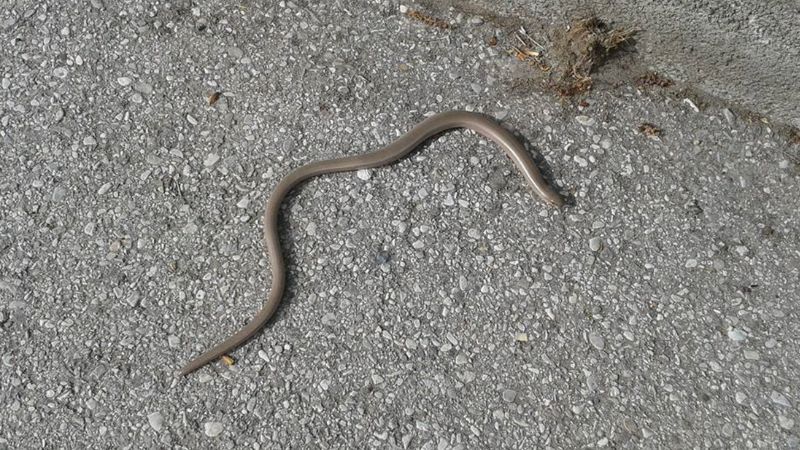
Snakes in urban areas
As urbanization expands and encroaches upon natural habitats, snake encounters in urban areas have become more common. Snakes might find their way into residential areas, parks, and gardens in search of shelter and food.
It’s essential for residents to be aware of their surroundings and take precautions to minimize potential interactions. Keeping grass trimmed, sealing gaps in buildings, and removing potential hiding spots can help discourage snakes from venturing too close to human activity.
Snakes in rural areas
Rural environments offer more natural habitats for snakes, and human encounters with these creatures are a regular part of life. In rural areas, people often have a better understanding of snake behavior and take necessary precautions.
Farmers and rural dwellers are typically aware of which snake species are common in their region and how to handle encounters safely. They might coexist with snakes, recognizing the benefits they bring in controlling rodent populations.
Snakes in natural habitats
National parks, forests, and wilderness areas are the natural habitats of various snake species. When exploring these areas, hikers, campers, and outdoor enthusiasts should be vigilant about potential snake encounters.
It’s essential to follow safety guidelines, such as staying on designated trails, wearing appropriate footwear, and avoiding putting hands or feet into areas where snakes may hide.
Respecting their natural environment helps reduce the chances of confrontations and ensures the preservation of these magnificent creatures.
FAQ
Do snakes run away from humans?
Yes, most snakes have an innate instinct to avoid humans and will flee if they perceive a potential threat. Snakes prefer to retreat to safety rather than confront a potential predator.
Can a man outrun a black mamba?
While the Black Mamba is one of the fastest snakes, capable of speeds up to 12 miles per hour (19.3 kilometers per hour), it is challenging for a human to outrun it in a short sprint. However, humans have superior endurance, and over longer distances, they can outrun a black mamba.
What should you do if a snake chases you?
Contrary to popular belief, snakes do not chase humans. If you encounter a snake, it’s more likely that it’s trying to escape or find a safe place. In such situations, calmly back away and give the snake plenty of space to retreat.
Are snakes afraid of humans?
Snakes do not experience fear in the same way humans do, as they lack the cognitive complexity for such emotions. However, they are naturally wary of larger animals, including humans, and will usually avoid direct confrontation.
Can snakes smell fear?
Snakes have a highly developed sense of smell, but there is no scientific evidence to suggest that they can detect human fear through scent. Snakes primarily rely on their sense of smell to find prey and navigate their environment.
Final thoughts on snakes outrunning humans
In this article, we delved into the intriguing question of whether snakes can outrun humans. We explored the unique serpentine locomotion that allows snakes to move efficiently and compared their speeds to those of humans.
While some snake species, such as the Black Mamba, can indeed outrun humans in short sprints, humans have the advantage of endurance, which can lead to a different outcome over longer distances.
We debunked common myths about snake behavior and highlighted the importance of understanding and respecting these fascinating creatures.
Snake-human interactions vary across different environments, from urban areas to rural regions and natural habitats. Awareness, knowledge, and precautions are essential in ensuring a safe coexistence.
While snakes may possess certain advantages in speed, humans have evolved with their unique strengths, intelligence, and endurance.
The question of whether snakes can outrun humans is not just a matter of competition but rather a testament to the diverse abilities of different species.
Ultimately, it’s crucial to appreciate and protect all forms of wildlife, including snakes, for their vital roles in maintaining ecological balance.
With proper awareness and caution, we can foster a harmonious relationship with these enigmatic creatures and appreciate their contributions to the world we share.

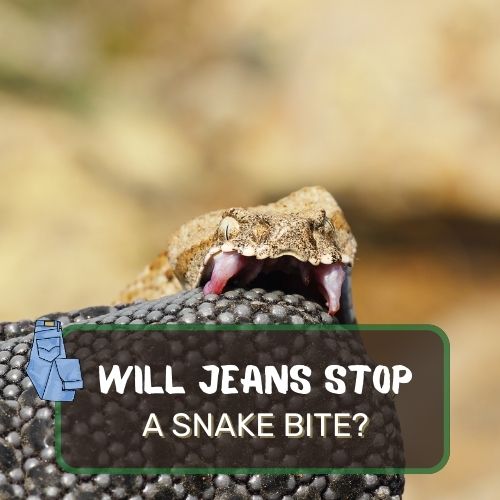
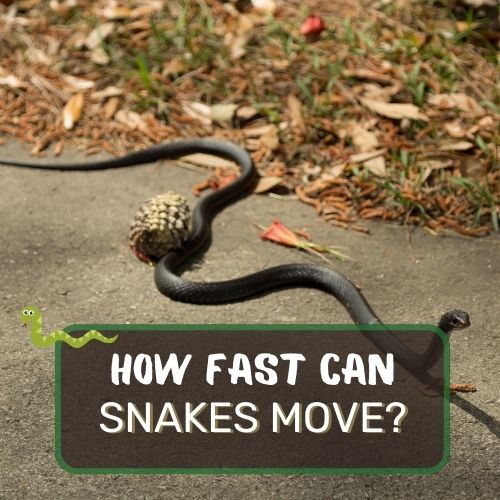

0 Comments